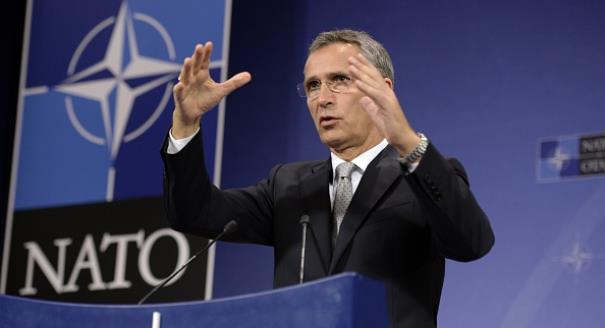One of the persistent weaknesses of NATO has been a lack of a shared threat perception among members of the alliance. The terrorist attacks in Paris on November 13, in which 130 people were killed, should have finally put paid to that. They haven’t.
NATO is unwilling to become involved as an alliance in fighting the so-called Islamic State, and with good reasons: fears of being dragged into a prolonged conflict, fears of retaliation by the Islamic State in other European countries, and no clear postmilitary goal.
Yet NATO countries are also not prepared to boost the defenses of the organization’s Southern members, which are vulnerable to the Islamic State—and now to Russia too, given Moscow’s increasing presence in the Mediterranean.
He also asked Germany for support when he met Chancellor Angela Merkel in Paris on November 25 before he traveled to Moscow to hold talks with Russian President Vladimir Putin. “When the French president asks me to think about what more we can do, then it is our duty to reflect on this and we will also react very quickly here,” Merkel told a joint news conference with Hollande.
The French president has not asked NATO for military assistance. Technically, he could have requested the alliance to invoke Article 5, which obliges members to come to the assistance of another ally if it is attacked or threatened. But NATO, as France knows, is in no shape to respond, even though the problems are on its doorstep.
For one thing, NATO lacks solidarity. The Southern countries, such as Italy, resent the fact that Poland can have it both ways. The new conservative government in Warsaw said it has no intention of accepting refugees from Syria and Iraq in the wake of the French attacks. The Polish government links the influx of refugees into Europe to the terrorist attacks.
Without sharing the burden, Poland continues to expect alliance solidarity when it comes to defending the Northeastern part of the alliance. Russia’s annexation of Crimea in March 2014 and its subsequent invasion of the Donbas region of eastern Ukraine have proved a real threat to the security of Poland and the Baltic states.
NATO was quick to respond to those threats. At its 2014 Wales summit, the alliance agreed on a Readiness Action Plan to boost collective defense. NATO has also put in place a Very High Readiness Joint Task Force, supposed to be able to deploy at very short notice.
The Southern states have long had NATO bases. But what they are now seeking is more support from NATO precisely because they are threatened by the Islamic State (and Russia) and at the same time—unlike Poland and other Central European countries—have to cope with the refugees.
There is a fundamental difference between the threats facing Poland and the Baltic states and those facing Southern NATO members. In the North, the threat from Russia is clear-cut. It is identifiable. Russia is a state actor. NATO can at least prepare.
The threat facing the Southern tier is far more complex. “Putting it bluntly, there isn’t a military or political narrative to deal with the Islamic State,” a European military official said on condition of anonymity.
The former military commander of NATO, Admiral James Stavridis, recently set out a plan for NATO. It entails, among other things, increasing intelligence sharing across the alliance and putting boots on the ground. “We would need between 15,000 and 20,000 U.S. and coalition troops,” most of them based in Iraq, he argued. The current aerial bombardments should also be stepped up, Stavridis added.
NATO has no appetite whatsoever to put boots on the ground. The lessons of Iraq, Afghanistan, and Libya have shown the inherent weakness of NATO and coalitions of the willing. “NATO has never been good at developing strategy for unclear contingencies,” said another military diplomat who also requested anonymity.
Perhaps it had better quickly develop one, not only because of the ever-growing threat from the Islamic State, but also because of what Russia is doing along NATO’s Northern, Northeastern, and now Southern flanks.
Russia has de facto established no-fly zones over the Russian exclave of Kaliningrad, over northern Russia, over Crimea, and now over Latakia, Syria. In Syria, Russia is pouring in weapons and other military hardware to support President Bashar al-Assad’s army as well as attacking opposition forces—despite claiming it is supporting the coalition against the Islamic State.
In practice, Russia can now hinder NATO’s freedom of action and navigation. Such no-fly zones over Syria are exactly what U.S. President Barack Obama had first proposed during the early stage of the Syrian war. But he backed away from them, fearing they would embroil the United States in another war and because Russia would have vetoed the plan in the UN Security Council.
Furthermore, if it is true, as Turkey claims, that a Russian military jet was warned about entering Turkey’s airspace on November 24, before Turkey responded by shooting it down, then that incursion was a test of NATO solidarity.
The alliance is in an unenviable situation. With questions being thrown at NATO as to why it is not fighting the Islamic State, or even offering logistics to the Western Balkan countries and Greece to help deliver security and infrastructure for refugees, the organization has provided few answers to Europe’s crises. NATO seems almost powerless.










